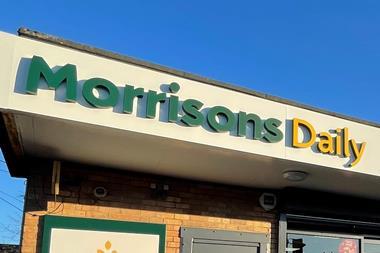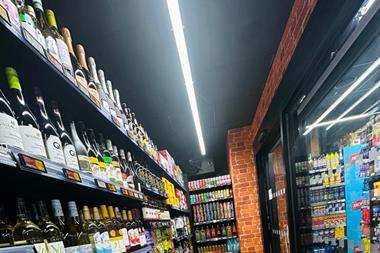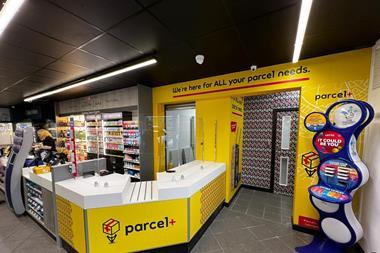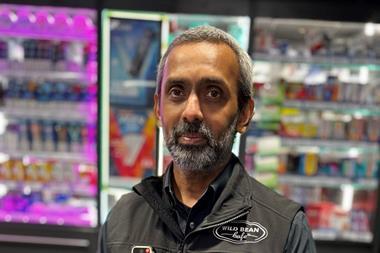The tobacco market of tomorrow may look very different to today’s, but its importance to retailers remains unchanged. Here’s how to adjust to the changes.
The UK tobacco category is certainly no stranger to challenge. From graphic health warnings to a ban on print media advertising and smoking in public places, the past 10 years alone have witnessed multiple attempts to hamstring the market with rules and regulation.
However, it’s now peering down the tunnel of its darkest period yet. In a little under a year’s time tobacco gantries will be covered up for good when the final phase of the display ban legislation hits small stores on 6 April.
And while currently open to a final public consultation following the conclusion of the Chantler Review, the advent of plain packaging in the UK now looks highly likely, in addition to new laws contained in the revised EU Tobacco Products Directive (EUTPD) which was finalised earlier this month.
number crunching
On average an independent c-store retailer will have 152 tobacco shoppers a week, but a store’s location can alter this greatly
Add to the mix the additional challenges posed by the UK’s growing illicit trade which continues to syphon vital sales away from the tills of retailers, plus the emergence of competitor categories such as electronic cigarettes, and it’s hardly surprising that tobacco sales, and cigarette sales in particular, are expected to take a tumble.
In fact, given the above, Zora Milenkovic, head of tobacco research at Euromonitor International, expects cigarette sales to decline at a compound annual growth rate of -5% over the next five years.
The above factors also look set to alter the market’s DNA, with the economy sector set to continue growing at the expense of premium priced brands, Milenkovic adds.
“New product developments, particularly on-pack, are likely to be heavily curtailed in the next five years once the display ban has been extended to all retailers in 2015,” she says.
record breaker
Currently worth £7.4bn to the convenience channel, and £15.4bn in total, tobacco is the UK’s biggest FMCG category
“The spectre of plain packaging in the UK could also sound the death knell for brands, and thus pricing power, further accelerating consumer migration to economy brands. Based on current trends, it is not inconceivable that the UK will become the first purely economy cigarette market in the world in a couple of decades’ time if plain packaging comes to pass,” she adds.
The above certainly makes for rather grim reading, and given the comparatively low margins afforded by most tobacco products from the cheaper end of the pricing spectrum, it’s hardly surprising that some convenience store retailers are starting to question whether the tobacco category is still worth their investment in time, space and money.
The answer, Milenkovic and many others agree, is yes, but there are some major caveats attached. In order to maintain tobacco’s virtually unrivalled role as footfall driver and turnover generator, retailers will need to take a dramatically different approach to how they manage the category in the future, and with just 11 months until the display ban the work needs to start now.
“Though regulatory and pricing issues mean bleak prospects for volume growth, cigarettes will continue to be the number one tobacco product, and tobacco in general will remain a profit opportunity for the foreseeable future,” Milenkovic adds. “However, product and price mix will be key.”
It might sound puerile, but getting the basics, such as availability, ranging and service right will be more important than ever as we head deeper into 2014 and beyond.
For independent retailer David Worlsford of Farrants Newsagents in Cobham, Surrey, the months ahead will be all about “taking ownership of the tobacco category”.
“Rather than reacting to future changes the key is to be proactive,” he says. “The tobacco market might be declining, but getting your availability, ranging and staff training perfect now will enable you to take a bigger share of it later,” he says. “I, for one, envisage my tobacco sales increasing as I seek to become the number one tobacco retailer in my area.”
Availability
Full shelves are essential
According to Imperial Tobacco, the average convenience store’s tobacco gantry currently runs at just 80% availability - not great when you consider that 14% of shoppers will walk out of a store if their preferred tobacco brand is not in stock, and 22% of shoppers will not return to that store again.
As such, Imperial is recommending that retailers get into the habit of checking availability at least three times a day in a bid to get closer to the 100% availability goal. Doing so will be particularly important in a display ban environment when stock levels tend to drop, as Imperial Tobacco’s independent availability executive Tim Oates explains. “We learnt from our experiences in Australia that availability falls in a dark market. To address this potential issue in the UK we have spent the past year developing a range of tools for retailers to encourage best practice and prepare them for the transition next year. In addition to Investigator, the new tool which helps stores identify why they are running out of stock, retailers with Imperial Tobacco gantries now have access to Maintenance - a new system designed to work in place of epos to help retailers place the correct order for their business needs.
However, even the act of creating a simple shopping list prior to visiting the cash and carry could help boost average availability from 80% to 86%, Oates adds.
Imperial has not been alone in its quest to help stores hit full availability. JTI has introduced its own category management tool, called ARTIST, in a bid to raise basic standards in advance of the ban. Availability tops the list of its key principles for retailers to get right, followed by range, training, innovation, sales and technology. Retailer Saleem Sadiq of Spar Renfrew is already putting the ARTIST plan to good use. “We use our epos system to set minimum stock levels for each line. As soon as stock drops below this level a new order is triggered automatically. These levels differ between brands and I work closely with my staff and scrutinise the data regularly to monitor these levels, readjusting to suit the latest trends,” he says.
retailer’s view
Jai Singh, Singh’s Premier, Sheffield:
“My tobacco sales have grown in the past eight months because I sell pricemarked packs and the supermarkets don’t, meaning that the big stores are often about 30p more expensive. Smokers are very savvy about pricing now and would rather walk to a local convenience store than pay the extra money in the supermarket.
“Tobacco accounts for almost 35% of sales and it’s a key footfall driver. Tobacco will always sell as long as you ensure your range meets the needs of your shoppers and you have the right brands at the right prices.”
Ranging
Adjust your range to suit shoppers
T obacco is one of the most regionally-biased categories in , so that what sells well in one area might only trickle off the shelves in another, and in the convenience store of the future retailers won’t be able to afford to tie-up vital gantry space and cash flow with slow-moving lines. This means rshould ing-“Lots of retailers blame tobacco for their cash-flow issues, but the problem is that they have got their ranging wrong and devoted too much space and money to slow selling brands,” Imperial’s Oates says.
“For example, when pictorial health warnings were first enforced, the retail industry had almost one full year to sell through their old stock, yet when the deadline came around many stores still had £800-worth of non-compliant stock on their shelves. These were obviously the wrong brands for their stores,” he says.
Retailer’s view
Binny Amin, Londis and Budgens stores in Kent:
“There is no denying that tobacco is a high- value and low-profit category, but it still plays a key role in convenience stores. And until the government makes it illegal, it will continue to drive footfall and sales.
“Looking ahead to 2015 I think you will still be able to profit from tobacco if you manage the category correctly. Pay close attention to growing segments such as RYO, which commands higher profit margins, and improve availability.
“Maintaining a good relationship with your supplier will also help.”
David Worlsford, who owns his own gantry, thinks retailers should be getting rid of “fringe ranges” now. “Look at your sales figures, determine which lines sell only occasionally and start winding these down now so that you can focus instead on your biggest sellers. If you don’t you’ll end up with loads of lines you can’t shift once the display ban comes in,” he says. However, that’s not to say it’s time to stop supporting new product development. The next 11 months still present a key window for stores to sell new tobacco products from growing segments such as capsule and sub-economy priced cigarettes.
Andy Short, owner of the Selsey Off Licence in West Sussex, is taking a slightly different approach to his ranging, choosing to axe tobacco lines that don’t drive sales of associated purchases. “I’ve examined my epos data and studied customer purchasing behaviour and reduced my gantry by half, only keeping brands that people buy with other things such as wine. While my turnover has fallen my profit is now up by more than 8%. Before, I had lots of footfall, but I wasn’t actually making any money. The brands I have kept are B&H Gold, JPS, Amber Leaf and Old Holborn.”
Staff training
Upskill your staff in time
Staff will play an increasingly important role in managing and driving tobacco sales once the shutters come down in 2015, and the need for comprehensive training has never been so important.
In order to keep queues down and service running smoothly staff will need to know how products are ranged in a dark market environment, and what their legal obligations under the new law are.
Independent retailer Bipin Haria of Seaford News in East Sussex will see his Imperial gantry go dark this October, , ensuring that compliance and service are plain sailing when the ban is enforced six months later in April.
retailer’s view
Balraaj Sindhu, Smoke and Wine Stores, Lifestyle Express, Wolverhampton:
“Tobacco currently accounts for about 40% of my sales, but the low profits have recently prompted me to join Lifestyle Express in a bid to grow sales in higher margin areas such as chilled foods. However, that’s not to say I’m planning on reducing my tobacco range. There will always be a market for it and the convenience store is the obvious place for it to be available.”
In-depth product knowledge will also be vital, JTI head of communications Jeremy Blackburn explains: “Our experience has demonstrated that the role of staff becomes increasingly important to explain to existing adult smokers the new innovations and products. They must be able to answer tobacco-related questions articulately and, most importantly, efficiently to avoid lost custom.”
Imperial’s Oates agrees. “Helping your staff to feel empowered about the tobacco category will be key,” he says. It’s a fact which will also stand stores in good stead should plain packaging legislation be brought forward.
Andy Short of the Selsey Off Licence in West Sussex thinks retailers could appoint tobacco category champions just as they do with other categories such as local produce and fresh and chilled.
that empowering these staff to track demand and trends, as well as keep a log of any lost sales due to availability shortfalls, could go a long way towards improving a store’s standards and reputation, as well as helping to motivate staff generally.
Websites such as JTI’s www.tobaccoretailing.com include a free staff training module to help staff keep abreast of all the latest and pending legislative requirements.
The symbol groups are also doing their bit with themed communications such as Landmark Wholesale’s Tobacco Matters initiative.
Alternative Solutions
Choose the best cover-up
The display ban legislation does not state how retailers must cover their units, only that the maximum display area is never exceeded. However, the three most common storage options are curtains, sliding doors and non-visible storage such as under-the-counter or overhead solutions.
In addition to creating a special ‘shop within a shop’ for his best-selling cigars and pipe tobacco offer, Farrants Cobham owner David Worlsford, who owns his gantry, is considering two options with which to conceal cigarettes and RYO: an under-the-counter solution, or an epos-linked vending solution, a system which is popular in Ireland, where a tobacco display ban was enforced in 2009.
“Either way, I don’t intend the valuable selling space on the wall behind the counter to be wasted and covered up with sliding doors,” he says. “An epos-linked vending solution will be easy for my staff and should also facilitate ordering,” he says.
Premier retailer Steve Carcher from Biddulph, Staffordshire, is already one step ahead, having installed an overhead cigarette dispenser as part of a trial with Booker and Expotutto. The traditional wall-mounted tobacco gantry in the busy 400sq ft store was replaced with a Servertab overhead unit in January and Steve is thrilled with the results. “Shop sales have increased by £1,000 a week and profits by £300 since having the new unit, thanks to the extra space we can now devote to higher-margin categories,” he says.
“We have seen no decrease in tobacco sales, but have seen a 23% uplift in spirits which are now positioned behind the counter, directly in front of the customer. The new unit has also decreased staff workload and improved availability. We can now fit up to three outers of 20s in one row - almost three times more than our old gantry,” he says.
A number of groups are said to be in talks with Expotutto, but the expected cost is about £1,500 plus VAT for an individual customer.
Imperial Tobacco is also providing retailers with contacts for companies which will add shutters to their gantries for less than £1,000. One such company is Maxim Retail Solutions, which offers a wide range of dark market options for stores of all shapes, sizes and locations. Options include manual sliding doors as well as self-closing doors. There is also a Shelf Shield designed of hinged flaps specifically for the Scottish market.
Retailers can learn more by visiting www.maxim-retail-solutions.com.
EU Tobacco Products Directive
The EU has now finalised the revised Tobacco Products Directive. Most of the new rules should apply by the first half of 2016.
Packs of less than 20 cigarettes and 30g of RYO tobacco will be banned. Capsule cigarettes and flavoured tobacco will also be banned from 2016, but a four-year phase-out period will apply to menthol cigarettes.
Picture and text health warnings will appear at the top of cigarette packs and cover 65% of the front and back, and 50% of the sides.
Promotional elements will be removed from packs, affecting references to taste or flavourings, and additive-free claims.
Display ban rules
A tobacco display ban will be enforced in all small stores on 6 April 2015
From this date displaying tobacco will only be permitted as you serve an adult smoker, or if an adult smoker asks for information about a tobacco product
In England, Wales and Northern Ireland you must never display more than 1.5sq m, while in Scotland the requested display space is smaller at just 1,000sq cm
Tobacco units can also be opened for stock taking, cleaning, replenishment and staff training, as long as the area displayed does not exceed the maximum display dimensions
Product in transit from stock room to the gantry must never be displayed
Prices can be displayed by a ‘word only’ price list displayed at the till point. This can be no larger than A3 in size and text must be in Helvetica font and no larger than 7mm high
Adult smokers can also be shown a picture price list upon request.
For further information, visit www.tobaccoretailing.com.
Future growth
“In recent years many adult smokers have chosen to switch to products which offer greater value for money - a trend which has manifested itself in the considerable growth of the value cigarette segment and the roll your own (RYO) market” JTI’s Jeremy Blackburn says. “This trend is expected to continue into 2014” he adds.
Value now accounts for 43% volume share of the ready-made cigarette market with more than one in three cigarettes sold in the UK now a value brand.
Worth £2bn and growing at 9.2% year on year, the UK RYO market is currently the biggest sector of the tobacco category by volume and the second fastest growing price sector in the UK tobacco category.





















1 Readers' comment